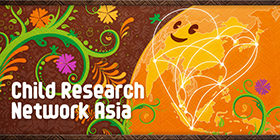1. The origin of the Mosuo festival of worshipping the Goddess Gemu
The origin of the Festival is the Goddess Gemu, the guardian deity of the Mosuo. The legend about the origin of the Goddess Gemu and the Festival goes as follows: A long time ago, there was a Mosuo girl named Gemu at Yongning Zhebo village, who was so smart and clever that she started to speak on the seventh day after birth. At three years old, she had already become an excellent singer and dancer. Hearing her beautiful singing, even the running deer and horses would stop to listen and the flying birds stopped chirping. She was so skillful that she could weave and embroider at the age of thirteen. The fabrics she wove were more colorful than the rosy clouds in the sky; the flowers she embroidered attracted bees and butterflies. She was sweet, friendly and helpful, leaving her footprints and good reputation across all the eighteen villages and the nine mountains nearby. At 18 years old, she grew into a graceful and elegant lady, just like the beautiful moon in the sky. Gemu's beauty, kindness, diligence became so well-known that infatuated men flocked to pursue her, hoping to win her love and favor. Gemu was not moved at all by any of the love songs sung days and nights to her or the countless expensive gifts from her suitors. Unfortunately, the God of Heaven was also attracted by Gemu. On July 15th of the lunar calendar, a tornado induced by the God of Heaven swept Gemu up into the sky. At Gemu's cries for help, all the Yongningba villagers came out to help, while the old people and children left at home banged pots and pans calling out loudly. Those working in the fields shouted loudly and chased after her carrying hoes on their shoulders in an effort to rescue the girl. The God of Heaven let go of her hands in panic, leaving Gemu to fall heavily to the ground and thus lose her life. Her body morphed into a majestic lion-like mountain lying on the east side of the dam, her long hair turned into a dense forest, and her blood merged into a flowing stream. The physical body of Gemu disappeared, but her noble soul lives forever in people's hearts.
Starting from July 15th, people swarmed to the foot of the mountain from all directions to pray ceaselessly for Gemu, the girl. On July 25th the Goddess Gemu, the embodiment of the soul of Gemu the girl, finally appeared. Dressed in a red blouse and white skirt, she was riding a white horse and playing on a bamboo flute, gazing at her hometown with deep affection. Finally, amid the people's exclamations of surprise she slowly faded into the sky. From then on, the mountain where Gemu was incarnated has been called Seng Ge Gemu (Seng Ge means the mountain is shaped like a lion) or "Lion Mountain" or "Mountain of the Goddess". July 25th of the lunar month, the day when the Goddess Gemu incarnated herself, has become a festival for local people to worship the goddess. It is said that the Goddess Gemu roams over Yongning Dam all the time and always protects the people here. Whenever a rainstorm comes, a strange cloud will appear on the top of the Mountain of the Goddess, giving people an early warning.
There are a lot of stories about the manifestation of the Goddess Gemu and her romantic love stories in the local folklore. In the Mosuo mind, the holy Goddess Gemu is the deity of protection and love. Under the care of the Goddess, the people live a happy life in peace, prosperity and freedom of love. It is exactly because of the beautiful, kind and loving Goddess Gemu, the mountains and waters here are all blessed with anima and the air here is so enchanting. Lugu Lake has become a utopia or "Kingdom of Daughters" in the people's minds.
2. The Mosuo ceremony for the Festival
On the day of the Festival, all the Mosuo folks living by Lugu Lake leave their villages, taking their families, dressed up in fancy clothes, carrying food on their backs and prayer flags on their shoulders and come to the foot of the Mountain of the Goddess Gemu. First, every family will find a place at the foot of the mountain and start setting up tents and fires. Secondly, they will take the prayer flags and children to worship at the temple of the Goddess Gemu where religious ceremonies will be conducted by lamas to pray for the blessing and protection of the Goddess Gemu. Finally, all the Mosuo people will start singing and dancing at the foot of the Mountain of the Goddess Gemu. They dance the "Ketso Dance" to pray for the blessing of the Goddess Gemu, which is also a ritual of sending off the Goddess and praying for her to have a rewarding battle.
Why do Mosuo people dress up on the day of the Festival? The Mosuo believe that the Goddess Gemu is a goddess of war, and at the same time she is a woman, which means that just like other women she also cares a lot about her beautiful appearance. The gold and silver jewelry people wear may serve as the funding for her expedition of conquest. The Mosuo believe that despite the harsh environment on the Tibetan Plateau, the reason that Mosuo people can still enjoy the fertile and pastoral land with mountains and waters is because of the blessing of the Goddess Gemu and her victory after fighting with male gods on the plateau.
Therefore, on the day of the Festival, Mosuo people wear gold and silver to worship the Goddess Gemu as an expression of gratitude to her.
3. The implication of the Mosuo festival of worshipping the Goddess Gemu
Mosuo people are those who worship nature and love life. For one thing, the Mosuo festival of worshipping the Goddess Gemu reflects the people's love of nature. The Mosuo people admire the Goddess Gemu and take very good care of the ecological environment of the Mountain of the Goddess Gemu, therefore the natural landscape of Lugu Lake has been well preserved up to now. For another, the Mosuo festival of worshipping the Goddess Gemu reflects the people's identification with their own ethnic group. On the day of the Festival, a large number of Mosuo families from Lugu Lake gather together, which not only enhances their sense of national pride, but also strengthens their bonds within the community.
With the social development strengthening the interaction between nationalities, the Mosuo people also invite their friends and relatives from all over the world to take part in the Festival at Lugu Lake. The Festival has become the best reason for the Mosuo people to invite their friends. Nowadays, more and more outsiders come to the Mosuo festival of worshipping the Goddess Gemu. People in the atmosphere of the festival give thanks for the beauty of life bestowed by nature. They hold hands during singing and dancing to feel each other's warmth. The Festival is a symbol of not only symbiotic harmony between man and nature but also mutual help and support.
A people that loves life and nature is full of vitality. During the Festival, the Mosuo sing folk songs in the forest, in the field and under the starry sky, exuding blessings, bringing fascinating legends to life. Every fabric of the Mosuo people's life epitomizes the ancient civilization of humanity. Mosuo culture is like a firefly in the darkness, shimmering, but still vibrant with life. The best way to appreciate such a traditional and ancient festival is for people to quietly merge with nature and sing an old-time song. It is also a good time for people to take the hands of their beloved ones and dance to a cheerful song.
References
- Cao Jianping. Cultural inheritance of the Mosuo festival of worshipping the Goddess Gemu. Lijiang Daily. 2016.8.28

Mosuo native, teacher with Lijiang College of Culture and Tourism, master in religion from Southwest Minzu University. Engaged in a number of social field research projects, such as the national language protection project Mosuo language rescue and protection, the project of National Social Science Fund " Cultural History of Disaster of Yunnan Indigenous Minority Groups", etc. Since 2011, following up with studies on Mosuo matrilineal culture (marriage, religion, etc.).Also engaged in related cultural researches and visiting scholars' projects.
- [Perspectives of Traditional Culture of the Matrilineal Mosuo of Lugu Lake] Part 1: Children Born from Sese (Visitor) Marriages Know Who Their Mothers and Fathers Are
- [Indonesia] Kindergartens in Indonesia that nurture religious values and independence through early childhood education--Current Situation Regarding Children's "Attitudes of Learning to Learn" (3)
- [Perspectives of Traditional Culture of the Matrilineal Mosuo of Lugu Lake] Part 7: Mosuo People's Ritual of "Guo Zhuang" Worshipping
- [Perspectives of Traditional Culture of the Matrilineal Mosuo of Lugu Lake] Part 9: Chinese New Year
- [Perspectives of Traditional Culture of the Matrilineal Mosuo of Lugu Lake] Part 8: The Mosuo Festival of Worshipping the Goddess Gemu
- [Perspectives of Traditional Culture of the Matrilineal Mosuo of Lugu Lake] Part 7: Mosuo People's Ritual of "Guo Zhuang" Worshipping














